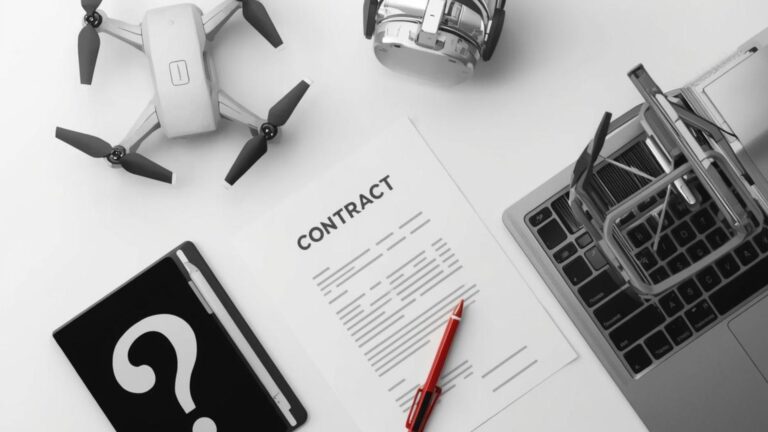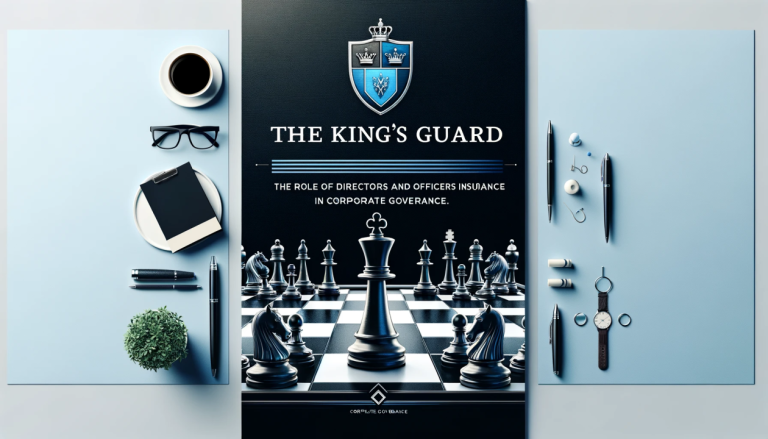In this section, we’ll walk through what insurers typically ask on a media liability insurance application, how to prepare your information, and tips to ensure you get the coverage you need.
Information You’ll Need to Provide
When you apply for media liability insurance, expect to answer detailed questions about your operations. Here are common areas the application will cover:
Business Details: Basic information such as your company name, years in business, and location(s) will be required. Insurers also ask about your corporate structure (LLC, corporation, sole proprietor, etc.) and whether you’re part of a larger organization or affiliated with any other entities. If you’re an individual (freelancer or sole proprietor), you’d provide your professional background in lieu of company info.
Description of Media Activities: You will need to describe what your media or content operations entail. Be specific: do you run a news website, publish books, produce films, run a marketing agency, host a blog, manage social media for clients, design advertisements, etc.? Insurers want to know the types of content you create or disseminate (text articles, videos, podcasts, ads, software content, etc.) and the platforms/mediums you use (print, TV, radio, online, social media, mobile apps, etc.). They might ask for the approximate breakdown of your activities (e.g., 50% marketing consulting, 30% video production, 20% publishing a magazine). The goal is to gauge your exposure – for instance, a firm that primarily produces documentaries has a different risk profile than one that mostly designs logos and branding content.
Revenue and Financials: Insurers use revenue as one factor in determining premiums (more revenue can mean more exposure to claims, as you have a bigger footprint). You’ll likely need to state your annual gross revenue from media activities. If you’re a startup or new venture, they may accept projected revenue. Some applications ask if you expect any significant changes in revenue or operations in the coming year (like launching a big new publication or entering a new market). Financial stability can also be a concern – a question might address whether you (or your company) have had any bankruptcy or insolvency issues. Generally, strong and consistent financials are a positive, as a financially distressed media company might be seen as higher risk (for example, there can be a perception that struggling companies might take more editorial shortcuts or controversial projects to gain attention).
Prior Insurance and Claims History: You will be asked if you currently have media liability or a similar E&O policy, and if you’ve ever had one cancelled or non-renewed by an insurer. You’ll also need to disclose any past claims or potential claims related to media/content. This includes formal lawsuits as well as cease-and-desist letters, threats of litigation, or retraction demands – anything that could hint at a dispute over your content. Be honest and thorough here: if you had a libel suit 3 years ago or you received a warning about a copyright issue last year, disclose it. Insurers understand that media companies can face claims; disclosing lets them underwrite appropriately (they might ask what the outcome was, or what you learned from it to prevent future issues). Non-disclosure of a known incident can lead to trouble down the line (like a denial of coverage if that incident later turns into a claim).
Content Risk Management Practices: This is a crucial part of the application. Insurers want to know how you manage the risks that come with publishing content. Typical questions include:
- Do you have a legal review process for content? (For example, do attorneys or experienced editors review potentially sensitive material before publication?)
- Do you fact-check and source material thoroughly? (They may ask if you verify information and have editorial standards in place.)
- Do you obtain releases or permissions when needed? (This might cover things like model releases for using someone’s likeness, location releases for filming, or written permission for using third-party content.)
- What clearance procedures do you have for intellectual property? (Insurers want to hear that you check trademarks before finalizing a brand name or search for existing copyrights for material you’re using. They might specifically ask if you use licensed images/music or have a procedure to avoid infringement.)
- Do you have written contracts with clients and freelancers? (Having clear contracts can reduce disputes, so insurers may look favorably on companies that use them. They may also ask if those contracts include hold-harmless or indemnity clauses – for instance, if you’re a marketing agency, do your clients agree to indemnify you if they provide content that gets you sued, or vice versa? These details help the insurer understand how responsibility is allocated in your work.)
- If applicable: Do you require freelancers/contractors to carry their own E&O insurance? (Some media companies insist that the independent journalists or creative freelancers they hire have their own liability insurance. If you do this, it’s a positive in the insurer’s eyes because it means another layer of protection.)
- How do you handle personal rights and sensitive topics? (For example, if you’re a publisher, do you avoid using real person references in fiction without permission? If you’re a news outlet, do you give subjects a chance to comment before publishing a potentially damaging story? These aren’t always direct questions, but you might volunteer such info in a narrative or an attachment if relevant to show you are careful.)
Sample Content or List of Publications: Some insurers might request a list of your major publications, shows, or accounts. For instance, a publisher might be asked to list their top-selling book titles or a magazine might list its sections/topics. An advertising firm might be asked for a few sample campaigns or clients (to ensure none are particularly high-risk or controversial). Sometimes insurers will even browse your website or social media to get a sense of your content. If you produce video/film, they might ask for a synopsis of upcoming projects. The idea is to catch any particularly sensitive areas – e.g., are you regularly doing undercover exposes or satirical content about public figures (higher libel risk), or are you mainly producing corporate brochures (lower risk).
Territory and Distribution: Applications often ask where your content is distributed or accessible. Are you local, national, international? Do you have significant audiences in litigious jurisdictions (like the U.S.) or places with strict media laws (like the U.K., which has plaintiff-friendly libel laws)? If you publish in multiple languages or countries, note that. The insurer may need to ensure the policy covers those territories. Many media liability policies are worldwide, but they still want to know if, say, 50% of your readers are in Europe or Asia, etc. Sometimes this ties in with asking what law governs your content contracts or if you have any physical presence in other countries.
All this information helps the insurer build a picture of your risk exposure and controls. It might seem like a lot, but it ensures you get the right coverage terms and pricing. Remember, insurers aren’t trying to be intrusive – they’re evaluating risk to decide acceptance and premium, but also to tailor coverage (for example, if you say you do live television broadcasting, they might include specific coverage endorsements for on-air libel, etc.).
Tips for a Smooth Application Process
To make the application process easier and improve your chances of a favorable quote, consider these tips:
- Prepare Documents and Materials: Before starting the application, gather relevant documents. This could include a media kit or brochure that describes your company, standard contracts you use (some insurers ask for a copy of the liability section of a contract you have with clients or content providers), and details of any past incidents (dates, what happened, resolution). If your content is online, prepare a list of your websites/channels. If you have internal guidelines (like an editorial manual or social media policy), having those ready is great – you might not need to submit them, but you can reference their existence (which shows diligence).
- Be Truthful and Don’t Downplay Risks: It might be tempting to gloss over risky aspects, but it’s better to be upfront. For instance, if you occasionally handle very controversial topics, state it and how you manage it (e.g., “We do investigative pieces on political corruption; however, we have a rigorous fact-checking and legal review process for these articles.”). Insurers appreciate transparency. If you fail to mention something significant and it comes up later (especially in a claim), it could jeopardize coverage. Plus, being honest doesn’t automatically mean you’ll get a higher premium; insurers might actually be more confident in offering coverage because you demonstrate awareness and proactive risk management.
- Highlight Risk Controls and Professionalism: Use the application as an opportunity to showcase how responsible your operations are. Answer questions fully, not just yes/no. If a question asks, “Do you have procedures for clearing third-party content?” don’t just tick “Yes” – consider adding a brief description: “Yes – all third-party images and music are sourced from licensed libraries or used with written permission; we maintain records of licenses for all assets.” This level of detail, often in a supplemental sheet or the margins, can impress underwriters. Similarly, if you have never had a claim or even a cease-and-desist letter, mention that – it shows a clean track record (though they’ll also rely on loss history data, a personal attestation helps). If you or key employees have relevant experience or credentials (like a journalist on staff who’s well-versed in media law, or a lawyer partner in your firm), that can be a positive – mention it in context of risk management.
- Don’t Rush – Accuracy Matters: Fill out the application carefully. Mistakes or omissions can cause delays or issues. Double-check things like revenue figures or the spelling of legal entities. If you’re not sure how to answer something, consult with your insurance broker or the insurer’s representative. It’s better to clarify up front than guess and possibly provide incorrect info.
- Attach Explanations if Needed: Most applications have space for additional information at the end. Use this if you need to explain something complex, or if you want to provide context for a “Yes” answer to a claim question, etc. For example, if you had a previous lawsuit and the outcome was favorable or lessons were learned, you might write: “In 2021, our company was sued for copyright infringement due to a freelancer using an unlicensed photo in an article. We quickly settled the matter for $5,000 and subsequently implemented a strict policy that all freelancers must source images from our approved licensed stock or verify permissions. We have had no incidents since.” This tells the insurer that while a claim happened, it was minor and you took concrete steps to prevent recurrence.
- Broker Assistance: If you’re working with an insurance broker (which is highly recommended for media liability), leverage their expertise. They can often provide a submission to the underwriters along with your application, where they highlight strengths of your account. They also ensure the application is filled in correctly. Brokers know how different insurers might react to certain answers and can advise if something should be framed differently or if additional info will help. Essentially, they act as your advocate to present your business in the best light while still being truthful.
Once you submit the application, the insurer’s underwriters will review it. They may come back with follow-up questions. Don’t be alarmed – this is normal. For example, they might ask for a copy of a contract clause, or clarification on how you handle a certain scenario, or even samples of content if they want a better feel. Respond promptly to keep the process moving.
What Underwriters Look For (and How It Affects Your Coverage)
Understanding what underwriters focus on can demystify the application process further. Here are some key things they evaluate and how it might influence their quote:
- Claims History and Behavior: Past claims are a predictor of future claims. One or two minor issues likely won’t scare underwriters, especially if resolved well, but a pattern might. If you’ve had multiple libel suits, expect tougher questions and perhaps a higher premium or specific exclusions (e.g., maybe they’ll exclude a particularly contentious publication if it had repeated issues). Conversely, a long history in business with zero claims is a strong positive – you might see a more competitive rate or fewer coverage restrictions.
- Risky Content Areas: Underwriters flag especially high-risk content. This could include things like investigative journalism about individuals or companies (libel risk), content that deals with adult material or extreme controversy, advice content in areas like finance or medicine (where misinformation could lead to big damages claims), or heavy reliance on third-party content which could raise IP issues. If your application reveals any of these, they will check if you have commensurate controls. Sometimes, an insurer might decide a certain exposure is beyond their appetite – for instance, some insurers might exclude coverage for any content related to medical/health advice unless very carefully vetted. But usually, if you demonstrate strong controls, they will include it but possibly at a higher premium or with a sublimit. For example, an insurer might offer full coverage but sublimit claims of professional advice negligence to $250k if you run a small financial blog – meaning they’ll cover those, but only up to a certain amount.
- Size and Reach: A global media company with millions of readers is seen as a different tier of risk than a local newsletter. Underwriters match your scope with appropriate policy terms. Large companies often need larger limits and sometimes multiple insurers sharing the risk. Small companies might easily get a policy from one insurer with a standard limit. The number of users or audience size can correlate to how many “eyes” might take offense or claim damage. It can also correlate to how attractive a target you are for litigation. This doesn’t mean small businesses are off the hook – even a tiny blog can get sued – but statistically, big ones face more frequent legal challenges.
- Professionalism and Risk Culture: This is gleaned from your application responses. Companies that approach content creation with a high degree of professionalism (e.g., written policies, legal counsel involvement, training programs) send a signal of lower risk. Underwriters might be more flexible or offer better terms if they sense the insured “gets it.” On the flip side, if an application is sparse, with many “no” answers to risk management questions and the vibe that “we just wing it,” an underwriter might worry. They could either decide not to offer coverage or price it higher to account for the perceived lax controls. They might also impose warranties or conditions, like requiring you to implement certain procedures and sign a statement that you will maintain them as a condition of coverage.
- Contractual Obligations: Some media businesses apply for insurance because a client or partner requires it. If that’s the case, underwriters may ask for a copy of the contract clause. Why? To ensure the insurance can actually satisfy the requirement and that it doesn’t promise something outside normal coverage. For example, if a contract requires you to add the client as an additional insured on your media liability policy, not all insurers do that for media E&O (unlike general liability). Or if you’ve indemnified a client for something broadly, the insurer wants to gauge that exposure. It’s good to share such requirements with your broker/insurer upfront, so the policy, if issued, meets your needs.
After the Application: Binding Coverage and Ongoing Duties
Suppose your application is approved and you receive a quote you’re happy with. The next step is binding coverage (making it effective). Typically, you’d need to:
- Confirm that all information in the application is still accurate (if some time has passed, they might ask “any changes since the application?”).
- Pay the premium (or at least a down payment if on installments).
- Possibly sign a warranty letter or no known loss letter confirming you’re not aware of any impending claims that weren’t disclosed.
Remember, a media liability policy is usually claims-made, meaning it covers claims first made during the policy period. It’s important from the date you bind coverage onward, you report any incidents promptly. Many policies also have a provision to report “circumstances” that might give rise to a claim, even if no claim yet – and if you do so in writing, a future claim related to that circumstance is treated as made during the policy. Use this feature if, say, someone sends a threatening letter or you discover a possible error in content that could lead to a claim. Reporting such potential issues before the policy expires can lock in coverage.
You should also know that renewals typically require an updated application or at least an update of key info each year. The first application is the most detailed; renewals often are shorter forms or attestation that things haven’t changed significantly (aside from updated revenue, etc.). Still, treat renewal applications with care too.
In sum, the media liability insurance application is your chance to present your operations accurately and favorably to insurers. By preparing thoroughly and highlighting your commitment to responsible content creation, you increase the likelihood of securing robust coverage at a fair price. It might seem paperwork-heavy, but once in place, that insurance provides invaluable peace of mind, allowing you to focus on producing content knowing you have financial protection against legal storms.
Final Thought: Turn Application into Education
One side benefit of going through this application process is that it can shine a light on areas where you might improve your practices. Perhaps a question asks about having written permission for content use, and you realize you’ve been a bit informal about that – you can institute a new rule to always get things in writing. Or the app might ask if you have media counsel on standby; maybe you don’t, but after thinking, you decide to establish a relationship with an attorney for future reviews. In this way, the application isn’t just a gate to insurance, but a checklist of prudent measures. Embrace it as a learning opportunity.
By applying for media liability coverage, you’re proactively protecting your business. And by carefully completing the application, you’re also engaging in risk management introspection. Both are signs that you’re a responsible media professional. Insurers value that – and ultimately, so will your business, as it fosters a culture that minimizes the chance of costly mistakes.
Closing Summary: The media liability insurance application process may require detailed information about your content operations, but it’s a straightforward step toward securing crucial protection. Expect to detail what kind of media you produce, how you handle fact-checking and permissions, your history with any legal claims, and other pertinent aspects. By preparing thoughtfully and answering fully, you not only improve your chances of a smooth approval, but you also demonstrate to insurers that you take liability risks seriously. Work closely with your broker, be transparent, and use the process to strengthen any weak spots in your risk management. Once your policy is in place, you’ll be able to create and publish with greater confidence, knowing that the coverage you carefully applied for will back you up if a dispute arises. The effort put into the application is well worth the peace of mind that comes with having media liability insurance tailored to your needs.
























































































































